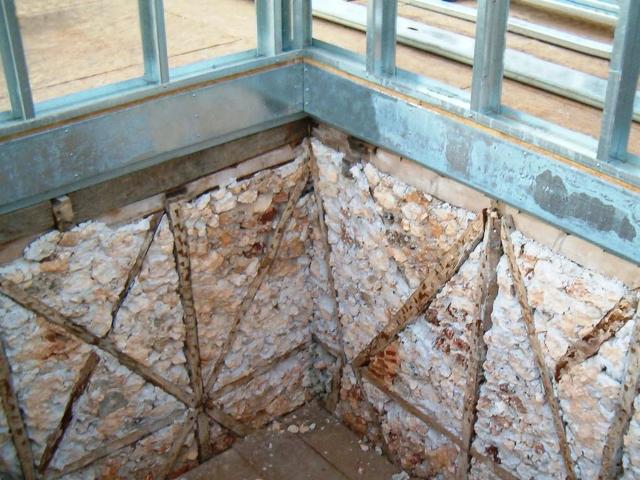Gaiola Pombalina on:
[Wikipedia]
[Google]
[Amazon]
 A gaiola pombalina (Pombaline cage; ) is a
A gaiola pombalina (Pombaline cage; ) is a

 A gaiola pombalina (Pombaline cage; ) is a
A gaiola pombalina (Pombaline cage; ) is a masonry
Masonry is the building of structures from individual units, which are often laid in and bound together by mortar; the term ''masonry'' can also refer to the units themselves. The common materials of masonry construction are bricks, building ...
building reinforced with an internal wooden cage, developed as an anti-seismic construction system in Portugal
Portugal, officially the Portuguese Republic ( pt, República Portuguesa, links=yes ), is a country whose mainland is located on the Iberian Peninsula of Southwestern Europe, and whose territory also includes the Atlantic archipelagos of ...
after the 1755 Lisbon earthquake
The 1755 Lisbon earthquake, also known as the Great Lisbon earthquake, impacted Portugal, the Iberian Peninsula, and Northwest Africa on the morning of Saturday, 1 November, Feast of All Saints, at around 09:40 local time. In combination with ...
and implemented during the reconstruction of Lisbon Baixa
The Baixa ''(Downtown)'' (), also known as the Baixa Pombalina (''Pombaline Downtown'') is a neighborhood in the historic center of Lisbon, Portugal. It consists of the grid of streets north of the Praça do Comércio, roughly between the Cais do ...
''(Lisbon
Lisbon (; pt, Lisboa ) is the capital and largest city of Portugal, with an estimated population of 544,851 within its administrative limits in an area of 100.05 km2. Grande Lisboa, Lisbon's urban area extends beyond the city's administr ...
downtown)''.
Background
The catastrophic event of 1755 showed the fragility of the masonry construction, which are not able to absorb and dissipate the energy released by the earthquake. Downtown Lisbon was heavily damaged and, in anticipation of similar catastrophe, a new construction method was developed. The entire downtown was razed to make way for a rebuilding initiative, which was centered on the giaola pombalina system. The term gaiola meant "cage" and was named after theSebastião José de Carvalho e Melo Sebastião is Portuguese for ''Sebastian''.
This name may refer to:
People
* Sebastião (given name)
Places
* Sebastião Barros, a town in the state of Piauí, Brazil
* Sebastião Laranjeiras, a city in the state of Bahia, Brazil
* Sebastião Lea ...
, the first Marquis of Pombal
Count of Oeiras () was a Portuguese title of nobility created by a royal decree, dated July 15, 1759, by King Joseph I of Portugal, and granted to Sebastião José de Carvalho e Melo, head of the Portuguese government.
Later, through another roy ...
. He was the Portuguese minister who introduced the building method.
Features of the old buildings that survived were retained while those that did not were replaced. There are sources that cite the construction methods in shipbuilding
Shipbuilding is the construction of ships and other floating vessels. It normally takes place in a specialized facility known as a shipyard. Shipbuilders, also called shipwrights, follow a specialized occupation that traces its roots to befor ...
as the inspiration of the three-dimensional wooden structure. Wood, being deformable, resists the forces of tension and compression that occur during an earthquake.

Features
Masonry is more effective than wood in resisting fires. Therefore, incorporating a wooden structure in masonry walls combined the advantages of both types of construction. The gaiola pombalino building features a traditional timber flooring and a hybrid timber-masonry shear walls. The walls were constructed using a woodentruss
A truss is an assembly of ''members'' such as beams, connected by ''nodes'', that creates a rigid structure.
In engineering, a truss is a structure that "consists of two-force members only, where the members are organized so that the assembl ...
system that was filled with masonry in the empty areas.
The gaiola pombalina system was also adopted by other European cities. There is the case of the palace built according to the concept of gaiola in the town of Filogaso
Filogaso ( Calabrian: ; ) is a ''comune'' (municipality) in the Province of Vibo Valentia in the Italian region Calabria, located about southwest of Catanzaro and about east of Vibo Valentia. As of 31 December 2004, it had a population of 1,397 ...
in the Calabria
, population_note =
, population_blank1_title =
, population_blank1 =
, demographics_type1 =
, demographics1_footnotes =
, demographics1_title1 =
, demographics1_info1 =
, demographics1_title2 ...
region. It was the only remaining building after the town was completely destroyed by an earthquake in 1783.
See also
*Pombaline style
The Pombaline style was a Portuguese architectural style of the 18th century, named after Sebastião José de Carvalho e Melo, the first Marquês de Pombal, who was instrumental in reconstructing Lisbon after the earthquake of 1755. Pombal supervi ...
References
Buildings and structures by construction material Earthquake engineering {{architecture-stub